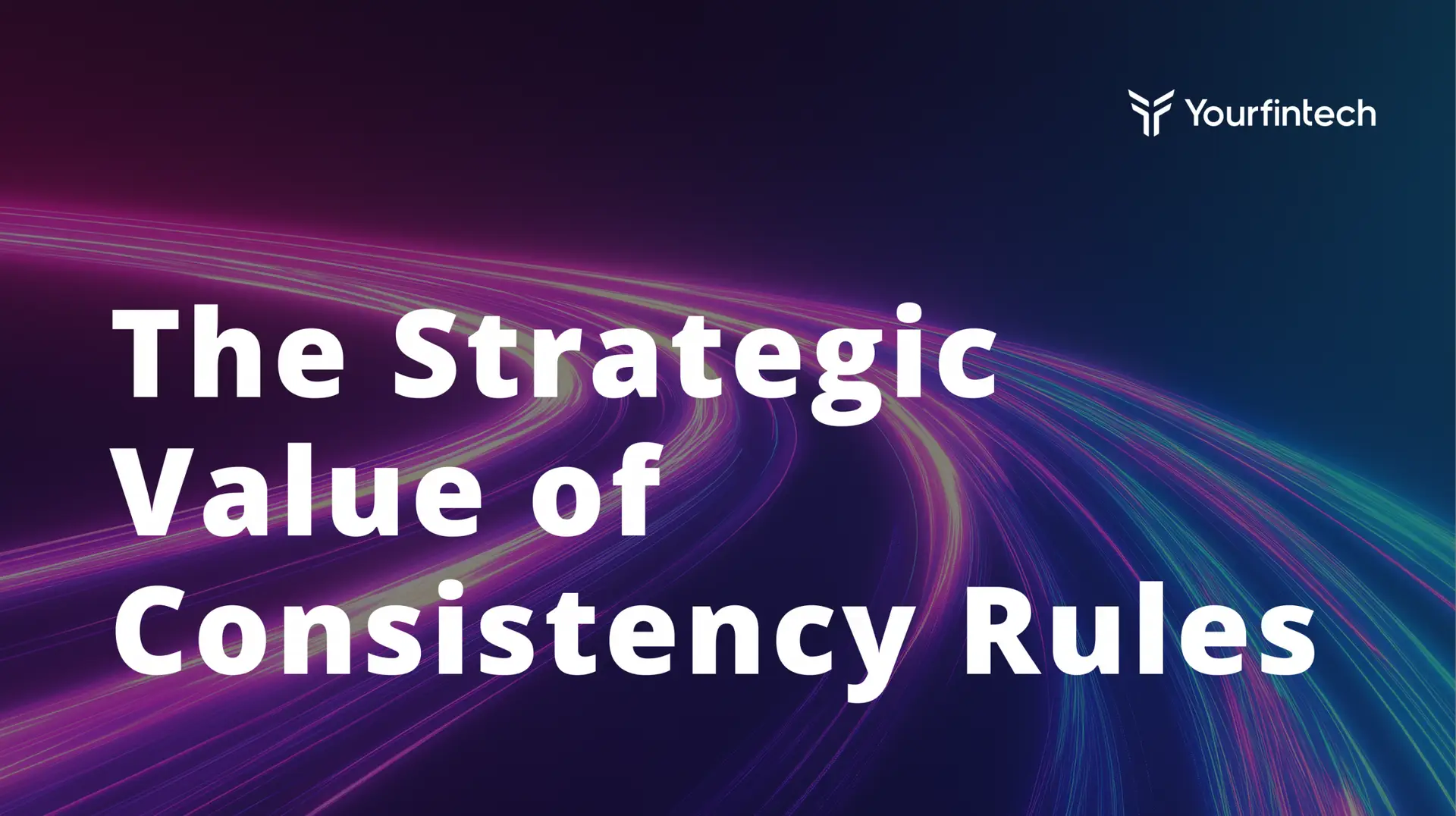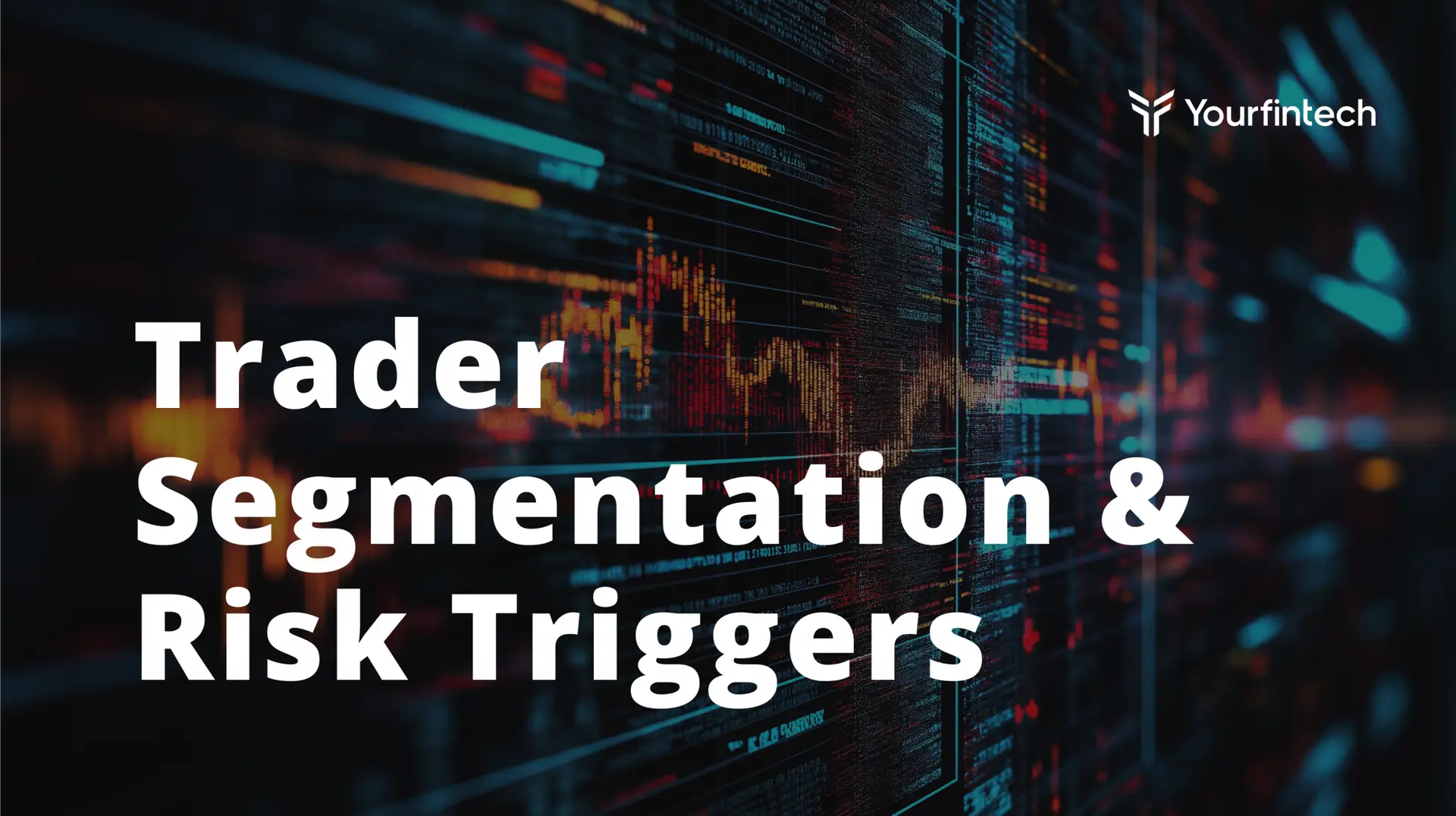Articles

Mastering Risk Management for Sustainable Profit
Every broker’s primary goal is to maximize revenue while maintaining a sustainable risk framework. Yet, despite the abundance of experience in the market, many brokers still overlook the fundamentals of proper risk management. Understanding how to manage exposure, structure a brokerage efficiently, and select the right operational model – market maker, agency, or hybrid – is critical to long-term profitability.
The secret to success lies not in avoiding risk, but in understanding it, calculating it, and building a business model where the mathematics work relentlessly in your favor. At its core, risk management is the art and science of controlling a broker’s profitability curve. Some firms prefer a flatter, more predictable curve, while others, with a higher risk appetite, aim for sharper gains. This foundational choice dictates everything that follows.
Key Takeaways
- Effective risk management defines brokerage success more than aggressive marketing or tight spreads.
- The market maker model offers higher profit potential but demands deep expertise in exposure control.
- The agency model reduces market risk but increases dependency on liquidity relationships and infrastructure.
- Strong infrastructure, execution monitoring, and mathematical awareness are vital for any broker’s profitability.
A Book vs B Book: Two Distinct Approaches

The brokerage industry primarily operates under two business models: the market maker (B-Book) and the agency (A-Book) models. Both aim for profit, but they differ dramatically in how they approach risk and revenue.
Market Maker Model (B-Book Brokers)
The b-book model remains the most widely used setup in the industry. In this framework, the broker internalizes trades, acting as the counterparty to clients, rather than routing them to external liquidity providers. This model offers higher profit potential but also exposes the broker to greater market risk.
Key risks for B-book brokers include:
- Market Risk stands as the most significant concern for a B-book Forex broker. However, contrary to what many newcomers believe, market risk isn’t uncontrollable or unpredictable. When properly managed, the market itself becomes a neutral force; it neither takes money from you nor gives it to you over the long run. The secret lies in mathematics and proper distribution. By spreading market risk evenly across your client base and ensuring leverage is appropriately allocated, you allow the law of large numbers to work in your favor. The key metric to monitor is comparing your expected revenue (total spreads, swaps, and commissions collected) against actual revenue. Significant discrepancies signal potential issues in your setup.
- Concentration Risk appears when leverage isn’t properly distributed. Imagine having thousands of clients with $1,000 balances and suddenly acquiring one client with $500,000; if you provide identical leverage to all groups, you’ve created dangerous concentration that could devastate your business overnight.
- Operational Risk encompasses technology configuration errors, instrument settings mistakes, and perhaps most critically, failure to properly calculate the business model mathematics. Many brokerages meticulously track deposits and withdrawals while completely overlooking promotions, rebates, discounts, and bonuses that steadily erode revenue.
The beauty of the market maker model is that, when set up correctly, the market itself is a neutral force. The statistical probability, bolstered by spreads, swaps, and commissions, should work in your favor over the long term.

Agency Model (A-Book Brokers)
The agency model, or STP (Straight Through Processing) model, eliminates most market risk by routing all trades to external liquidity providers. However, this model introduces a different set of challenges.
The most significant risks in the agency model include:
- Counterparty Risk becomes paramount in agency operations. Your entire business model depends on liquidity providers honoring agreed-upon terms. Unfortunately, reality often diverges from expectations. After three months of operations, many brokers discover significant discrepancies between promised spreads and commissions versus what they actually received. Even more problematic, liquidity providers may unilaterally change terms when unhappy with trading activity, including imposing previously waived swap charges. This relationship-driven nature means that without reliable, trustworthy counterparties, agency models become extremely difficult to operate profitably.
- Liquidity Risk involves the danger of failing to receive the execution quality and terms you’ve negotiated. Regulatory frameworks in stronger jurisdictions actually evaluate offshore liquidity providers as equivalent to unhedged exposure. If your liquidity provider lacks proper controls and reliability, you haven’t truly hedged your risk.
- Infrastructure Risk proves critical in agency models. Execution quality depends heavily on technology infrastructure, including data center selection, latency management, and proper system architecture. Co-location of systems, quality data feeds, and proper order routing all impact profitability.
It’s crucial to understand that a purely agency model is challenging to sustain, especially with an Introducing Broker (IB) focused strategy, as payouts can easily outstrip thin margins. Many who claim to run an agency model are, in reality, outsourcing their risk management to LPs for a rev share.
Historically, the agency model worked well when brokers had prime brokerage relationships with banks, allowing access to raw liquidity and even negative spreads on major pairs. However, as banking liquidity has become scarce and recycled, this model has lost much of its viability.
Hybrid Models: The Best Business Model of Both Worlds
In reality, most brokers today operate under hybrid models, combining elements of both market making and agency structures. This allows them to internalize a portion of the flow while hedging the rest through liquidity providers, balancing profitability and risk exposure. The challenge lies in structuring this setup intelligently, deciding which client segments belong to each book, and monitoring performance closely.
The Role of Infrastructure and Technology in Brokerage Firms
Both business models rely heavily on robust technological infrastructure. Surprisingly, many brokers still underestimate the importance of hosting, execution quality, and latency management.
Essential components include:
- Financial-Grade Infrastructure: This is not an area for compromise. Your systems must be hosted in a top-tier data center like Equinix to minimize latency and prevent disastrous maintenance downtimes. The choice between a simple aggregator and a powerful matching engine can make a million-dollar difference.
- A Reliable, Tradable Data Feed: Your price feed must be executable, not just for display. It needs a real, reliable counterparty behind it.
- A Unified Business View: Marketing cannot operate in a silo. Launching a bonus campaign without the dealing desk’s approval is a classic error that breaks the underlying mathematics of your business. The entire company must be aligned on how deposits are transformed into net revenue.
Specifically for Market Makers:
Client Profiling Dashboards: You must understand your clients’ trading patterns – what they trade, when they trade, and how they trade. Profiling allows you to spot anomalies and ensure your client base is well-distributed across the statistical bell curve.
Market Making Tools: Specialized software is becoming increasingly vital for actively managing exposure and optimizing the internal rulebook.
An Experienced Dealing Team: A skilled risk management team that understands exploitation vectors is your first line of defense.
Common Exploitation Vectors Brokers Must Guard Against
Several well-known exploitation methods threaten brokerage profitability:
- Infrastructure and Latency Exploitation involves retail traders taking advantage of delays between price feed updates and execution, essentially trading without market risk by exploiting technological gaps.
- Swap Arbitrage represents straightforward abuse of rollover interest rate differentials, typically involving positions held specifically to collect favorable swap rates.
- Volatility Arbitrage includes gap trading, news trading, and other strategies designed to profit from rapid price movements where broker technology may lag market reality.
- Asymmetric Leverage Effects occur when inappropriate leverage levels are offered on instruments with significant daily ranges. Offering 1:1000 leverage on gold, which moves an average of 1% daily, creates severely unfavorable risk-reward mathematics for the broker.
- Bonus Exploitation happens when promotional campaigns lack proper protections. A 50% bonus without safeguards creates a risk-reward ratio of 1:1.5 – you can make 100% but lose 150%, breaking your mathematical model from the start.
Building a Strong Risk Management Foundation
Effective risk management begins with fundamental business model construction. This requires:
- Understanding Revenue Streams and Costs in complete detail, including all the hidden elements that erode profitability – promotions, rebates, discounts, bonuses, and commissions.
- Experienced Risk Teams who understand not just market risks but also the myriad ways that technology, Forex trading terms, and business practices can be exploited.
- Proper Agreements and Monitoring with all counterparties, including regular auditing of execution quality, spread accuracy, reject rates, and overall performance against agreed terms.
- Integration Between Departments, ensuring marketing, sales, and risk management work together, with dealing teams having input on all campaigns and promotional activities.
The brokerage industry has historically undervalued risk management as a function. Too many firms remain deposit-oriented and sales-driven without proper attention to how those deposits convert into sustainable revenue.
This needs to change. Poor risk management doesn’t just harm individual brokerages; it creates poor user experiences, damages industry reputation, and ultimately hurts clients. The mission should be clear: elevate risk management to its rightful place as a core business function, ensure that dealing teams are heard and valued, and shift the industry toward more mathematically sound operations.
Mathematics, Not Magic!
Risk management in FX and CFD brokerage isn’t mysterious or unpredictable. It’s fundamentally about mathematics. Calculate what comes in, calculate what goes out, ensure the numbers work in your favor through proper spread management and leverage distribution, and monitor continuously for deviations from expected performance.
Whether you choose market making, agency, or hybrid models, success comes from understanding your risks completely, building appropriate infrastructure, maintaining strong counterparty relationships, and most importantly, ensuring the mathematics of your business model work before launching campaigns or accepting clients.
The brokers who thrive aren’t necessarily the most aggressive or the most promotional – they’re the ones who understand their numbers, respect the mathematics, and build sustainable business models where probability works in their favor over the long term.
FAQs
1. What’s the difference between an A-Book and a B-Book broker?
An A-Book broker sends client trades to external liquidity providers in the interbank market, earning from spreads and commissions. A B-Book broker internalizes trades, taking the opposite side of client positions to maximize profit but with higher market risk.
2. Why do forex brokers use hybrid models?
Most forex brokers now use a hybrid broker model, combining A-Book and B-Book execution to balance profitability and risk management. This hybrid approach helps maintain a balanced trading environment and adapts better to changing market conditions.
3. How do sophisticated risk management systems improve investor confidence?
Sophisticated risk management systems help brokerage firms monitor exposure, volatility, and client behavior in real time. By ensuring regulatory compliance and stable trading conditions, they strengthen investor confidence and reduce the chance of significant losses.
4. How do brokers make money without risking reputational damage?
Brokers make money through spreads, swaps, and commissions, not just from client losses. Reliable execution, transparent pricing, and effective risk management strategies protect reputation while ensuring sustainable profits.
5. Why is risk management crucial in volatile market conditions?
Strong risk management helps forex brokers and financial institutions stay profitable even when market volatility increases. By using hybrid models, monitoring client trades, and adjusting exposure, brokers can manage risk and maintain long-term stability.



